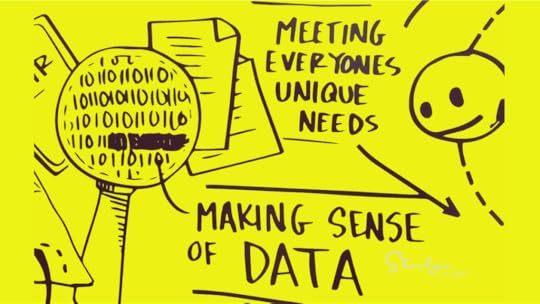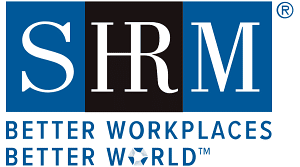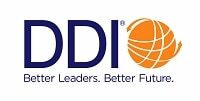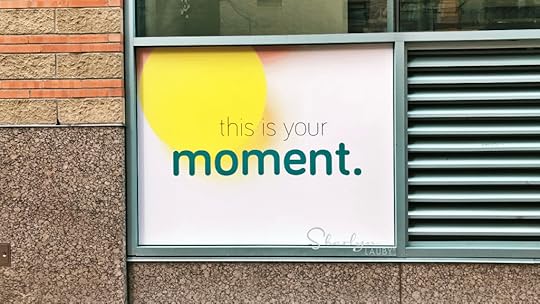Sharlyn J. Lauby's Blog, page 21
June 23, 2024
HR Professionals Play a Key Role in Technology Strategy

Estimated reading time: 4 minutes
One of my first roles in HR involved technology. The company I worked for had their own proprietary human resources information system (HRIS). When system users (aka the HR team) had requests to change the system, they would send their suggestions / ideas to me. I would collect them and forward them to the technology department. When a request was completed, I would test it and help with the implementation communications.
Of course, a lot has happened in both HR and the technology world since then, but one thing is still important – HR needs to play a key role in the company’s technology strategy. Today’s business world is dependent on technology, which means that employees are dependent on technology to get their work done.
Even if you don’t use a computer every day, it’s likely that you use a smart phone to communicate with your boss or coworkers. You might also track your working hours via an app. Maybe the work you complete is entered into a software program so others can plan and organize customer touchpoints. You get the idea. Technology is increasingly a part of our professional lives.
The Society for Human Resource Management (SHRM) recently partnered with the California Institute of Technology (CalTech) to create a credential program for human resources professionals. It’s called the SHRM CalTech Advanced Technology Credential.
SHRM gave me the opportunity to preview this program and share my takeaways with you. Before I talk about the program content, let me tell you a few logistical details. The program is online and self-paced. It takes about 20 – 24 hours to listen to all the content. You can earn up to 24 SHRM professional development credits (PDCs).
The content is presented in five sections:
Cybersecurity FundamentalsCloud ComputingSystems ThinkingArtificial IntelligenceData AnalyticsThere’s also a sixth optional section on virtual and augmented reality, which is very interesting and worth checking out.
Each section is led by a CalTech faculty member or subject matter expert (SME) who brings both theory and practical application to the material. At the end of each session, you’re asked to answer a couple of questions. Then at the end of the program, you’re asked to answer about a dozen questions.
If you’ve taken a credentialing exam before, then you’re probably used to a formal proctored experience with lots of exam questions. This program is not like that. It’s more casual with the focus on the session content.
Speaking of the session content, I thought this program did a great job of balancing technology fundamentals with strategic considerations. For example, in the cloud computing section, the presenter discussed the different models (SaaS, PaaS, and IaaS) and how they are being used in organizations. As HR professionals, this is information we should know now and in the future. It impacts our technology strategy and decision making.
Another example was in the final (optional) session where the presenter shared the differences between virtual reality, augmented reality, extended reality, and the metaverse. Then, they connected these concepts to employee training and how organizations are using technology to simulate learning environments. While some companies might not be thinking about this right now, with access to VR headsets becoming more mainstream, it might not be as far away as we think.

I’ve said before that employees expect their technology experience at work to be similar to the technology experience they have at home. This means organizations need to think about what the future employee technology experience will look like. The time to get educated about these concepts is now. And since this is a self-paced program, you’re not in a rush to complete it. I completed a section each week.
Organizations should have a technology strategy. They need one for customers, which means they need one for employees. HR professionals should play a key role in developing the employee technology strategy. I thought the SHRM CalTech Advanced Technology Credential provided a good refresher on technology fundamentals and valuable insights to consider for the future.
I know there’s a lot of talk about keeping the human in human resources. Knowing technology isn’t about removing the human part. Knowing technology is about creating a work environment where technology does what it does best. That way, the rest of our time is spent focusing on the human part.
Image captured by Sharlyn Lauby at the SHRM Annual Conference in Las Vegas, NV. SHRM logo used with permission.
The post HR Professionals Play a Key Role in Technology Strategy appeared first on hr bartender.
June 20, 2024
To Increase Performance Use Debrief Tools

Estimated reading time: 3 minutes
I’ve mentioned before that I’m a big fan of debriefs. Whether you conduct them on an individual, team, or organizational basis, debriefs can enhance performance. And debriefs aren’t just for big projects. For example, recruiters and hiring managers might want to debrief after they hire someone. The question becomes what’s a good debrief tool?
For a long time, I’ve used a two question debrief:
What did we do well? Start with this question. It’s easy to go straight to all the things that went wrong. Take a moment to celebrate your successes – because you had them.What could we do differently next time? Please note: I didn’t say what went wrong. It’s possible that there are just different things you’d like to try next time.Recently, I was reading my Hobonichi newsletter and the author talked about using a goal-setting tool called KPT. It’s an acronym that stands for keep, problem, try. As I was reading the article, it made me think that KPT could be a great debrief tool as well.
KEEP – What are those things that worked well, and we need to keep doing? You know that everything was not a disaster. So, identify those things that you want to keep for the future. PROBLEM – Yes, there might have been problems or challenges along the way. Now is the time to make note of them so they don’t happen again. TRY – Finally, what things do we want to try in the future? Maybe there’s something on the “keep” list that we want to enhance. OR possibly there’s something on the “problem” list that we have an idea on how to fix it.The thing that I liked about the KPT approach is the “try” component. There are always things we want to keep doing and stop doing which is the reason that the “try” list becomes so important. It helps us to set goals (as the author of the Hobonichi article mentioned) but it does it in the context of current performance. The “keep” and “problem” lists help us acknowledge current performance. The “try” list pushes us to get better.
I could see KPT being a visually appealing way to do a debrief, especially with remote teams. There could be three lists: Keep – Problem – Try. Participants could add their comments to each list. Then the list would be discussed. In fact, maybe when a project starts, the project team could create a Keep – Problem – Try list and people could add / edit / subtract from it as the project goes along. That could be fascinating from the standpoint of things that start out being problems but become keepers (or vice versa).
The important takeaway is to find a method for doing debriefs. Because they’re important for achieving high performance. Train employees on how to do a debrief – for themselves and for the teams that they’re on. To me, debriefs are part of what Dr. Peter Senge calls a learning organization. People, teams, and organizations learn from the activities they do and debrief.
Organizations that are striving to improve performance – and we all know they are – should examine their debrief process. Are people using it? If they are, is it working the way it should? Could we make some adjustments to get better results? These are all questions worth asking.
Image captured by Sharlyn Lauby at the SHRM Talent Conference in Orlando, FL
The post To Increase Performance Use Debrief Tools appeared first on hr bartender.
June 18, 2024
How Leaders Can Encourage Employee Learning

Estimated reading time: 6 minutes
(Editor’s Note: Today’s article is brought to you by our friends at DDI , a global leadership firm that helps organizations hire, promote, and develop exceptional leaders. They were recently named to the Forbes America’s Best Employers 2024 list . Congrats to them and enjoy the read!)
A couple of months ago, I published an article on “10 Work Skills Every Manager Should Have Today”. If you haven’t already seen it, I hope you’ll check it out. A reader asked a great question in the comments asking for ways HR professionals can encourage learning.
It got me thinking. How can organizational leaders encourage employee learning? Since we’ve been chatting with our friends at DDI about leadership, I asked if they would share their knowledge with us. Verity Creedy is DDI’s vice president of product management. In her role, she has partnered with organizations to develop leaders and she has a special passion for the growth of frontline leaders.
Verity, thanks for being here. Let’s talk about learning. But I want to start at the organizational level. Why should organizations want to create learning cultures?

[Creedy] There is a clear business case for the return on investment (ROI) from learning. DDI’s Global Leadership Forecast 2023 data shows that companies offering effective leadership development at all levels are 2.7x more likely to be a top financial performer in their industry.
Additionally, we know that organizations that have a strong culture of development also enjoy more open feedback among colleagues, and higher rates of employee satisfaction as they feel a sense of growth in their company.
I’d like to think the first step in creating a learning culture is being a self-driven learner. How can leaders be role models when it comes to learning?
[Creedy] Leaders play a critical role in encouraging employees to be self-driven learners. For example:
Do leaders reference their improvement areas and how they are striving to close gaps?Do leaders model reserving and protecting time for their own development?Do leaders debrief recent learning activities and share information and points of value they gained during the development?While self-driven learning is important, there are still times when leaders need to encourage others to learn something new. Can you share 2-3 things that leaders can do to encourage others to learn?
[Creedy] Leaders must support their employees as they complete learning. It’s one of the biggest drivers of longer lasting behavior change. This support should come before, during, and after their team member’s development activities. For example:
Before: How can they generate anticipation and discuss any barriers to the employee completely engaging during their development?
During: How can the leader encourage the employee to focus on key aspects to the learning and how it aligns to their daily work? How can they motivate the employee to network during their development?
After: How can the leader provide ongoing feedback as they take responsibility for applying their new skills?
From a human resources perspective, is there something HR can do to create a conducive environment for learning?
[Creedy] HR can play a continuous role in encouraging the learning and development of employees. Firstly, they need to ensure that the learning they are providing is effective and valuable. DDI has identified 5 critical aspects to designing high quality development experiences. These include:
Relevant: Put the employees’ needs front and center, ensuring that what they learn is deeply relevant to their roles and daily challenges.Personalized: Every minute employees spend on learning needs to be meaningful to them. Use assessments and insights tools to help personalize learning for each employee.Immersive: HR can help to create an environment where employees can interact and perform tasks, while learning, as they would in real life. This allows employees to authentically practice and apply their skills.Human: Every person brings their heads and hearts to their work, role, and interactions with others. So, any learning, especially on interaction / soft skills, must connect at a human level.Trusted: In a world driven by search engines, employees need to know that the development they are getting is credible, effective, and that it will make their jobs easier and their performance better.Following on from this design work, HR should consider the branding of the learning. Are they communicating in a way that inspires employees to participate and stay committed?
Lastly, we know manager support is critical – so HR should engage the managers of learners, so they are ready to support and champion the development initiatives of their team members.

Last question and it’s kind of a toughie. Many organizations discourage learning because they feel if they train an employee they’ll just leave. How can leaders proactively help the organization understand the importance of learning?
[Creedy] The business C-suite is focused on driving results, and just as previously shared, the correlation between employee learning and business results is clear: Organizations are 2.7x more likely to be a top financial performer when they have effective development. There is an obvious business case.
In terms of the concern that growing employees increases the chance in them leaving, I would challenge that actually … NOT growing employees increases the chance of them leaving. Leaders who say they have the tools to do their jobs well are 5X more likely to find their jobs full of meaning and purpose than those who do not.
So, leaders can do more to help shine a light on the business value of employee development, being an ally to HR teams or HR business partners. Leaders can also show how any development activities have been valuable by sharing examples of how a team member is using new skills, or how development has driven recent innovations and improvements, or how learning has motivated or retained talented employees.
I want to extend a huge thanks to Verity for sharing her knowledge and expertise with us. One of the things we didn’t have time to chat about in this interview is how leaders can encourage different types of learning. If you want to learn more on this, DDI has a couple of great resources:
“Using Micro and Macro Learning Effectively”
“Blended Learning Strategies for Leadership Development”
Both articles are a reminder that learning and development doesn’t have to be a one-size-fits-all approach. In fact, that’s what is wonderful about today’s learning environment … we have options. And leaders should encourage employees to take advantage of all the learning opportunities available.
The post How Leaders Can Encourage Employee Learning appeared first on hr bartender.
June 16, 2024
Have the Right Expectations Regarding Artificial Intelligence

Estimated reading time: 3 minutes
When it comes to artificial intelligence (AI), one of the first things I think about is the future. We talk about AI being the future and how it will help us shape the future. I did an AI experiment recently that reminded me when we talk about the future, we can’t forget the past.
I was working on some revisions to a training program recently and I felt the content needed a new icebreaker. I thought, “Hey! I’ll ask AI to give me an icebreaker suggestion.” So, I asked GPT-4o (developed by OpenAI) and Gemini (developed by Google) the same question:
Tell me an icebreaker exercise to use with 20 professional adults in a virtual training program.
Both AI programs provided instructions for conducting the icebreaker activity. If you’re interested, we’ve put them in a single page PDF that you can check out here.
It was interesting to see how each program responded to the prompt. Gemini included a list of materials including a mention of Google Docs. It also highlighted the benefits of using this activity – engaging, low pressure, and reveals preferences. GPT-4o included timing for each step in the activity and added some tips for working with a large audience.
But neither of them created anything new. Both icebreaker activities have been around for decades. They are not original. I’m not saying either one of them is bad. I am saying that I was surprised that AI suggested something so … well, old. It was an educational experience for me for a few reasons.
AI is still learning. One of the things we continue to hear about AI is that it needs to learn. That’s why we see organizations changing their terms of service and/or asking us to opt in when it comes to their AI tools and learning. We need to have the right expectations. Maybe things that were developed in the past are classics and exactly the right things to suggest. I can also see how some things that were developed years ago might be old and outdated, so they may not get recommended. We need to evaluate the information provided by AI. This is where humans and AI will work together. AI doesn’t know everything, like your training audience. These icebreaker suggestions could be great, or they could be a disaster depending on your participants.Just in case you’re wondering … while we appreciated the AI suggestions, for this particular training program we were working on we stuck with the classic “interview your partner” icebreaker. Both AI-suggested icebreakers did include a reminder about keeping comments professional, light, and positive to avoid any discomfort.
This AI experiment made me realize that AI and I are learning together. And because we are, there could come times when I have to adjust my expectations about what AI can and cannot do. That’s a good thing for both of us.
Image captured by Sharlyn Lauby while exploring the streets of Chicago, IL
The post Have the Right Expectations Regarding Artificial Intelligence appeared first on hr bartender.
June 13, 2024
How to Find the Right Consultant – Ask #HR Bartender

Estimated reading time: 4 minutes
As many of you know, I’m a consultant. The name of our company is ITM Group, Inc.
But just because I’m a consultant doesn’t mean I’m the right consultant for everyone. We’ve recently had some organizations contact us about consulting work and I think they’re genuinely surprised when we say that we’re not the right consulting firm for them. One of the lessons I learned very early in my consulting life is that the key to being a good consultant is knowing what you do well and sticking to it.
It wouldn’t be fair nor appropriate of me to take on an engagement that I’m not a good fit for. So, I thought it might be helpful to share some tips for finding and engaging the right consultant. Here are five to get you started:
Identify what you want the consultant to do. Every HR consultant does not do everything and please don’t let them tell you that they do. That being said, I have been known to say to organizations “I can do this piece and I know another consultant who can do that piece.”. Organizations should not be surprised if a consultant says, “I’m not the right person.” That doesn’t mean they won’t ever be the right person … just not for the current project. Have a budget. And a timeline. Two of the first things consultants want to know is “Can you afford me?” and “When does the work need to be completed by?”. It’s no different from discussing with a candidate their salary requirements. Organizations don’t want to waste their time and the candidate doesn’t want to waste theirs either. Check out their work. The good thing about researching consultants is that you can connect with them on social media platforms like LinkedIn. Or listen to one of their sessions at a conference. Or check out their blog, YouTube, or TikTok channel. This allows organizations to get some sense of the consultant’s point of view prior to formally reaching out to them.Be prepared to answer specific questions about the scope of work. If you’re chatting with a consultant about a project, be able to answer questions about the project. For example, if you want someone to conduct training, are you thinking in-person or online? Do you want customized content or something the consultant has already developed? Honestly, those are basic questions that should have been finalized in step one (above) so they should be relatively easy to answer. Talk to multiple consulting candidates. Even if you like a particular consultant and are 99% sure that you’re going to partner with them, don’t be afraid to chat with someone else. The other consultant might be good for a different project.We’ve talked before about the advantages of having a buy – build – borrow strategy when it comes to staffing the organization. There are projects where it could make good business sense to use a consultant (aka a “borrow” strategy). That means building relationships with consultants is important.
And from a consulting perspective, it means being honest with client companies about what you can and cannot do. If you do a good job, companies will respect your work and continue to engage with you.
As we start thinking about the remainder of the year, it’s possible that organizations might want to partner with consultants that will help them accomplish their goals. If that’s the case, the time to start researching and building relationships with consultants is now.
Image captured by Sharlyn Lauby at a construction site while pondering core business values in Gainesville, FL
The post How to Find the Right Consultant – Ask #HR Bartender appeared first on hr bartender.
June 11, 2024
3 Steps to Conduct a Minimum Wage Audit

Estimated reading time: 5 minutes
(Editor’s Note: Today’s article is brought to you by our friends at Poster Guard® Poster Compliance Service , the leading labor law poster service that gets your business up to date with all required federal, state, and local labor law postings, and then keeps it that way — for an entire year. Enjoy the article!)
Since July 2009, in the United States, the federal minimum wage has been $7.25/hour. However, there have recently been a lot of changes to the minimum wage on a state and local level. Currently, 30 states have a minimum wage higher than federal law. In addition, cities and counties in over 80 localities have adopted minimum wages above their state’s minimum wage.
Don’t expect this trend to change anytime soon. For example, in my state (Florida), the minimum wage is increasing incrementally until it reaches $15/hour in September 2026. So, changes are happening regularly.
It’s really important to understand what’s going on with minimum wage because if there’s a difference in minimum wage laws, employers are required to pay the most generous rate to non-exempt workers. Here’s a quick example to illustrate. If I’m a non-exempt employee working in Denver, Colorado. How much should I get paid per hour?
Federal minimum wage $7.25/hourColorado minimum wage $14.42/hourDenver minimum wage $18.29/hourOkay – this was an easy one, the correct answer is $18.29/hour. And remember that this applies to overtime pay as well.
Honestly though, I want to believe that employers know when they’re required to pay more than federal minimum wage. But with all the changes going on, employers need to ask themselves if they have a process in place to make sure they stay current with all these minimum wage changes. Especially if the organization has employees who work remotely.
Keep in mind, if the employee relocates, their rate of pay might change. Using the non-exempt Colorado employee example above, let’s say the employee has been living in Telluride and relocates to Denver. Employers might be certain they’re paying someone more than $7.25/hour. But if the employee is making $15/hour, did the organization know they should be making $18.29/hour?
That’s why it might be valuable to conduct a minimum wage audit. Just to clarify here, we’re only focused on minimum wage. Employers might be doing compensation related audits for other reasons like verifying exempt / non-exempt status under the Fair Labor Standards Act (FLSA) or evaluating pay equity. Those are also valuable reasons to audit compensation and they might factor into this conversation. But for now, let’s just focus on minimum wage.
How to Conduct a Minimum Wage AuditTo conduct a minimum wage audit, here are three steps to consider:
Find a proven source for minimum wage information. Our friends at Poster Guard have developed a Minimum Wage MonitorÔ Premium Service. This online tool provides employers with a color-coded map that displays minimum wage data. It also shows past and future wage rates. This could be very helpful for future planning and budgeting purposes. The tool sends email notifications whenever minimum wage laws are passed or changed so employers can start preparing for the new rates to take effect.Examine employee wages in relation to the law and your internal practices. Once an organization has partnered with a reliable information source, you can start conducting their wage analysis. This isn’t simply a question of “are we or aren’t we” paying more than minimum wage. Employees know what the minimum wage is and they do not have to talk to someone in the breakroom to figure out if they’re not being paid fairly (given a minimum wage increase). Oh, and I don’t want to get off-track, but if your state/location requires pay transparency in recruitment marketing, then you’ll want to ensure that you’re disclosing the correct pay rate. Determine if there are “pay gaps” that need to be addressed. Organizations have to remember that they’re not just evaluating new employee pay. Minimum wage changes can impact other things, like wage compression. As a quick refresher, wage compression happens when a new employee is paid nearly the same amount as another employee with longer tenure. An example would be if an employer hires a new customer service representative at $15/hour, but a customer service rep with 5 years of service is making $15.50/hour. The organization will need to find the budget, put together a wage adjustment schedule, and plan to speak with employees about getting their pay on track.It’s possible that the results of a minimum wage audit need to be considered with other compensation related audits. Of course, if you have any questions along the way, don’t hesitate to consult with your legal counsel because as I mentioned earlier, this trend with minimum wage changes isn’t going away anytime soon.

The last thing any employer wants is to be considered “out of touch” because they don’t know what the current minimum wage is for employees. Beyond appearing to be clueless, companies can’t afford to risk the potential wage and hour or FLSA lawsuits from their employees. Minimum wage laws are changing regularly. Get reliable information so you can pay people properly.
Speaking of reliable information, our friends at Poster Guard are going to be speaking at a webinar on “Minimum Wage Rates on the Rise: Learn How to Keep Your Business Compliant” on Tuesday, June 18, 2024 at 1p Eastern. The webinar is free and eligible for professional development credits. You can register on the HR.com website.
One more thing. We spent our time today talking about minimum wage changes from the perspective of employee pay. This is a good reminder that most – but not all – of these changes require new labor law posters. Don’t forget that Poster Guard’s Poster Compliance Service keeps you in compliance by providing automatic replacements (at no additional cost) every time a mandatory change occurs.
The post 3 Steps to Conduct a Minimum Wage Audit appeared first on hr bartender.
June 9, 2024
One Piece of Career Advice for Human Resources Professionals

Estimated reading time: 3 minutes
Someone asked to interview me recently and one of the questions they wanted me to answer was about career advice for human resources professionals. They never got around to asking me the question, which was really a shame because I thought I had a good response. ha.ha. So, I decided to share it with you here.
If I could offer one piece of career advice to human resources pros, it’s this – don’t be afraid to accept assignments outside of HR. Over the years, I’ve worked on many terrific HR projects and gained valuable insights. But I’ve also been fortunate to work on operations projects that gave me experience in the business. These operational projects helped to shape my HR point of view and build relationships around the organization and my profession.
Some of the projects I’ve worked on included:
Opening a facility. I’ve also assisted in closing a facility as well. While some of the tasks you have to do are similar, they can be very different where employees are concerned.Problem-solving operational challenges, including identifying casual relationships and recommending a solution. Want to know what keeps your managers up at night? Work with them on an operational problem . Being a member of an emergency response team. This included understanding organizational risk, developing a communications plan, and implementing the plan. Managing payroll and security. Sometimes these functions are a part of HR and sometimes not. Regardless, HR works closely with these areas because they involve employees. It can also offer some insights about customers which rarely happens with HR. Assuming a “manager-in-charge” role when executives were away from the office. Someone must be in charge when the leadership team is out of the office. Even if it’s for a day, this can be a very eye-opening activity.So don’t shy away from non-HR activities when you have the chance. It’s a great way to learn the operation and build relationships with the management team. Taking on these assignments doesn’t mean you’re not committed to your profession. In fact, it shows the opposite. How many times have we heard how human resources professionals need to know the language of business? Too many. These types of operational projects can be just the chance you’ve been looking for.
If you want a few other career development activities, here are some additional suggestions.
How to Get Your First Job in Human Resources
Bookmark This! Books on Recruitment and HR Topics
Choosing the Best HR Certification
How to Maintain Your Professional Certification
One last thing. Deb Cohen wrote a book called “Developing Management Proficiency: A Self-Directed Learning Approach”. I like Deb’s work because it introduces the idea of a “career portfolio”. You know how designers keep a portfolio of their work? Well, think of this as the same thing for non-designers. We can create our own career portfolios and regularly review them to make sure we’re staying focused on our goals. I think it could also serve to make sure we stay on track.
Managing our career can be challenging. There are times when we could be pulled in multiple directions. And that’s not always a bad thing. Developing a plan and regularly revisiting that plan could be exactly what we need to stay engaged and accomplish our career goals.
Image captured by Sharlyn Lauby while exploring the streets of Las Vegas, NV
The post One Piece of Career Advice for Human Resources Professionals appeared first on hr bartender.
June 6, 2024
10 Public Speaking Tips for Your Next Business Presentation

Estimated reading time: 6 minutes
I’ve been seeing a few questions lately on social media about how to learn public speaking. Many people are suggesting Toastmasters, which is great. For those who aren’t interested in joining Toastmasters, I wanted to also add a few thoughts.
I feel very fortunate that I learned about public speaking early in my professional career. One of my very first jobs was being a tour guide at a theme park. While I didn’t realize it at the time, the experience was priceless.
We’ve all heard the old cliché about people fearing public speaking more than death. Now more than ever, it’s essential for business professionals to learn how to speak in front of groups. It’s part of our job. Even if we don’t do it every day. Let me share a couple of examples:
At conferences, major sponsors are often invited to speak about their company. Or a volunteer leader might be asked to introduce a speaker.I once worked with a software company that held an annual users conference. During the event, their programmers (i.e. the subject matter experts) would conduct the sessions. The programmers had to not only work on their sessions but also their presentation skills.It is no longer acceptable to make excuses like “I’m not a professional speaker.” or “I don’t need to learn public speaking.” because someday you might need to do an introduction, deliver a short talk about your company, or conduct a presentation demonstrating your expertise. So, the next time you’re invited to do any kind of public speaking, here are 10 tips that might help you:
PRACTICE! Practice! And then practice some more. Whether it’s your 1st or 51st presentation, it doesn’t hurt to do a little practice. Review the material. If you’re using PowerPoint, make sure it works. I like to practice in front of a mirror – it gives me reminders about my posture and body language. I also practice saying the words out loud. Not only does it allow me to get comfortable with the material but I can time myself to see if I’m over/under.Arrive early and stand in front of the room. And I don’t mean stand there for 30 seconds. Stand there long enough to get comfortable with the surroundings. If the room has a podium, stand behind it for a couple minutes to see how it feels. If the podium is on a riser, stand on it so you know what it feels like to walk up the steps and be on a raised platform. The more comfortable you are, the more you can focus on the content you are sharing.Test the microphone. The room has a microphone for a reason. People think their voice will project – it doesn’t. When you are supposed to use a microphone and you don’t, you give the audience a reason to stop paying attention to you. Don’t test the microphone using the sentence “Test one, two, three…” When I test a microphone, I try to use a couple of sentences that allows me to get used to the sound of my voice amplified. For instance, I like the sentence, “I have a Dalmatian. She likes to eat Pop-Tarts.” I like the sentence because it has a “P” word in it – and I can hear how it sounds.Get a photo. This is a biggie! If there’s an event photographer, find out if you will be photographed and if you can get a copy of the photo. As a businessperson, a photograph of you standing behind a podium is gold. If there’s no event photographer, ask someone in the front row if they will take a couple photos of you while you’re speaking. Give them your phone. Buy a few gift cards before the event to thank them afterward. Ussies are “in”. If you don’t want to hand over your phone over to someone, do an ussie. Turn your back to the audience, ask them to smile and wave, then snap a photo with them in the background. Or just take a picture of the audience and send it out via social media. It’s a way to get the audience involved and have some fun. Take your name badge off. Why? See reasons 4 and 5 above.Don’t say your content is boring. This might seem like a no-brainer, but I can’t tell you how many times I’ve heard someone refer to their material as boring. I suspect they’re doing that only because it might be technical. If you say it, then people will believe it before they even hear you speak. You’re the expert and what you have to say is important. Period. Post the event hashtag and your account handle on every slide. PowerPoint is at most events these days. Instead of hating it…use it as an opportunity. I’ve been seeing a lot of conference activity on Threads lately. Presenters can post great soundbites on a slide that also includes their Threads handle, and the conference hashtag. Make it easy for attendees to connect with you and share your thoughts. Have one piece of “filler”. I’ve been to several sessions where the speaker has ended early. Not 5-minutes early but 15-20-even 30 minutes early. Honestly, I can empathize. It’s happened to me – you anticipate more interaction or questions, etc. Create a safety net by having one piece of extra info. Make it something you know really well that doesn’t need a slide or handout. If you don’t need it, that’s fine – it didn’t make or break the session. But if you notice you have time, share it. Do a self-debrief. If you’re speaking at a conference or event, you might get evaluations. Regardless, do a short self-debrief with yourself. Start with “What did you do well?” Don’t deny yourself the opportunity to celebrate the things you did well. Then ask, “What could I do differently next time?” You might think of a different story to tell or want to change the order of things.The best way to learn public speaking is by doing. It’s one of those things that gets easier with frequency. And being a little nervous is okay. It’s about focusing on being comfortable with the room so you can showcase your expertise and knowledge.
Image captured by Sharlyn Lauby after speaking for a group in Boston, MA
The post 10 Public Speaking Tips for Your Next Business Presentation appeared first on hr bartender.
June 4, 2024
Bookmark This! The Organizational Culture Edition

Estimated reading time: 3 minutes
Every organization has a culture. The question becomes does the organization’s culture deliver the results they need? I ran across an article on Forbes recently titled “Building a Company Culture to Drive Success”. Honestly, I don’t know that the article had anything new to report but it was a reminder of what great organizational cultures do: they attract candidates, boost productivity, increase revenue, and decrease turnover.
That’s why it’s important to make building and maintaining a positive organizational culture a priority. Here are a few articles to help your organization conduct a “culture check” and confirm that the culture you want is the culture you have.
How Organizations Can Build an Intentional Culture
Organizations use their culture to attract, engage, and retain the best talent. Keep in mind there’s a proven process to build culture: 1) Identify the organization’s purpose. 2) Agree on how the organization will reach its goals, along with what customers and employees should expect. And finally, 3) Apply those concepts by giving managers the training and tools to support the organization’s culture.
Leaders Drive Organizational Culture
Company’s culture is what sets the business apart – both from a candidate and a customer perspective. Which is why I can see how company cultures are fragile. A few bad leaders can have a detrimental impact on cultural structure. When that happens, it becomes very difficult to turn things around. That’s why investing in leaders is so important. Because they touch and shape and mold the company’s culture.
4 Steps to Create a Support Driven Company Culture
Feedback is a good thing. Over the past few years, many organizations have dedicated a lot of resources toward improving feedback mechanisms – at every level of the organization. While I think that the initial focus of those resources has been to replace outdated processes like the traditional performance review model, that doesn’t mean it can’t be used to develop a support driven company culture.
Organizational Culture: Do the Work to Get the Benefits
Whether it’s communicating what the organizational culture is, allocating time and resources to creating / maintaining it, or making the commitment to change when necessary, if organizations want the benefits of having a great culture (and we all know they do) then they have to do the work. No shortcuts. That’s how you get the reward. And the reward benefits the company, the employees, and the profit line.
I realize that creating and maintaining culture is tough. It takes a lot of time and conversations for organizations to get to the place where everyone agrees about what the organization’s culture should look like. But getting everyone on the same page can be a great way to refocus and might be exactly the strategic activity that the organization needs right now.
Image captured by Sharlyn Lauby while at the Wynwood Art District in Miami, FL
The post Bookmark This! The Organizational Culture Edition appeared first on hr bartender.
June 2, 2024
New CEO Fires Long Term Employee – Ask #hr bartender

Estimated reading time: 4 minutes
Today’s reader note is a tough story to read. I’m sharing it for two reasons. First, because this person was kind to share it with me and second, because I’m hoping my response will benefit not only this person but others in the same situation. Full disclosure: I did edit the note for brevity and to remove any identifying references.
I was recently fired from a job I had for ten years. I received good performance reviews about my work and had good relationships with our suppliers, banks, customers, and coworkers. The shareholders respected me.
Almost a year ago, the company hired a new CEO, and everything changed. They did not like me, complained about my work, and changed everything I was doing. They yelled at me on more than one occasion and told me that my work was incorrect. They asked me to change to a new software program with no training. Then finally without warning they fired me.
I’ve worked in my field for over 30 years with two employers. How can someone come and destroy all that you’ve been working for? I tried to talk with the shareholders, but they are staying silent. I tried to speak with the owners, but they are never available. I spoke to HR and their answer was “It’s time for you to look for another job, the CEO isn’t going anywhere.” I would appreciate your comments on this.
Losing your job is hard. Losing your job and not understanding the reason why is even harder. I understand the “your job isn’t your life” thing but it doesn’t change the fact that we spend almost one-third of our day at work. And we work for decades. So, when someone else makes the decision to fire us or eliminate our role, it’s hard. We need time to process what happened and figure out our next step. And that’s what needs to be done here.
As much as it pains me to say it, the reality is that sometimes organizations hire CEOs or executives who decide to get rid of employees. Many of those people are loyal, hardworking employees with good performance reviews who love what they do. It’s unfortunate and hurtful. HR professionals often try to mitigate the situation, but sometimes they are ignored. Unless the employee has proof that they can take to a government agency or lawyer, it becomes very difficult to talk the organization into giving a fired employee their old job back.
And on some level, the employee has to decide if that’s really even a good option. For example in this situation, the employee knows that their boss doesn’t like them, says their work is wrong, and treats them with disrespect. Ask yourself, “Is that really where I want to spend my time?”. You could be miserable and always wondering what might happen next.
I do understand the other option is looking for a new job, which is also tough. Especially, if you haven’t done a job search in a while. There’s an old saying that still holds true today: The best time to be networking for a new opportunity is when you still have a job. If you’re not out on social media, you should be so you can connect with recruiters and people in your profession. When you land an interview, you have to be prepared to discuss why you’re looking and what happened in you last job (because you know you’re going to get asked).
The good news is that in today’s job market it might be possible to do freelancing or contract work. This option might offer regular work and provide individuals the option to choose their clients so they’re not working at organizations that don’t respect them. It’s possible to research connecting with a staffing agency or go out on your own. Both have advantages and drawbacks to consider.
I wish I could say there’s one right answer here but there’s not. I wish I could say that the next step is easy but it’s not. I can say that each of us must decide what’s best for us and our careers. Hopefully, I’ve provided a few things for an employee to consider. Keep in mind that today’s article has been focused on the work aspect. We also need to consider how our career decisions influence our personal lives.
There’s an old quote from Alexander Graham Bell that says, “When one door closes, another opens.” Be proud of the work you’ve done in the past. Be happy about the relationships you’ve built. Don’t let your departure ruin that. Now it’s time to focus on what the next step will be and see what the future holds.
Image captured by Sharlyn Lauby while exploring the streets of Anaheim, CA
The post New CEO Fires Long Term Employee – Ask #hr bartender appeared first on hr bartender.
Sharlyn J. Lauby's Blog
- Sharlyn J. Lauby's profile
- 10 followers



